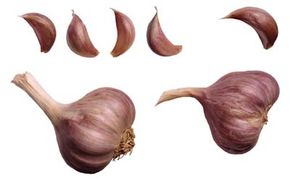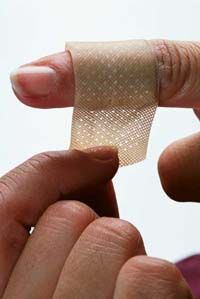Witches are usually depicted with a wart at the end of their nose, and you've certainly heard the old wives tale that claims you can catch a wart by touching a frog or toad. But witches didn't get their warts from toads, and toads' bumps aren't actually warts. How, then, do people get warts?
Warts are caused by the human papillomavirus (HPV), and there are more than 60 varieties of it. You get a wart from coming into contact with the virus through skin-to-skin contact. You can get the virus from another person, via a handshake for example, or you can actually give one to yourself if you already have a wart. You can spread the wart virus to other parts of your body by scratching, touching, shaving, or even biting your nails. All it takes is a little break in the skin for the virus to enter the system.
Advertisement
In this article, we'll discuss 24 home remedies for dealing with warts -- from avoiding them to treating them. Some are as simple as making small diet changes; some involve seeing a doctor. But first: How do you know if you have a wart? Identification is the first step in treating a wart.
Culprit Categories
Before you can attempt to get rid of your wart, you have to be sure that little bump actually is one. There are three common varieties -- common, plantar, and flat -- according to the American Academy of Dermatology.
Common warts are found in areas where the skin has been broken: where fingernails are bitten down to the quick or hangnails are picked until they bleed. Often, they look like they have little dots or seeds in them, which is why they're frequently called "seed warts." But what you see aren't seeds; they're merely dots produced by the blood vessel supplying the infected area. Common warts are:
- Small
- Flesh-colored
- Hard
- "Seedy" and rough to the touch
- Raised
- Usually found on kids, because they always have some kind of sore on their fingers, and people with immune system deficiencies, since they are more susceptible to all types of viral infections.
Plantar warts do not stick above the surface the way common warts do. That's because the pressure from walking pushes them back into the skin. Plantar warts are:
- Usually found on the weight-bearing areas of the foot (plantar means bottom of the foot)
- Usually gray or brown
- "Seedy" and rough to the touch
- Hard
- Flat
- Painful. At the very least, a plantar wart can feel like a stone in the shoe. It can also cause a sharp, burning pain. At worst, the repetitive pounding of simple footsteps can irritate these nuisances, sometimes so badly they bleed.
- Able to grow to an inch in circumference or more and spread out into clusters called mosaic warts.
Flat warts are the smallest of the warts. Flat warts are:
- Found in clumps of 20 to 100, usually on the face and neck, but also on the chest, knees, hands, wrists, and forearms. In men they're common in the bearded area, most likely picked up from shaving irritations and nicks. In women, they're common on shaved legs.
- Tiny
- Flat
- Smooth
- Flesh-colored, gray, or brown
There are dozens of other kinds of warts, as well as other problems that may look like warts. If you have any concerns, consult your physician. What looks warty to you could be something much more serious, such as a skin cancer.
A medical mystery also surrounds the fact that researchers have yet to find a way to get rid of warts for good. The solution may lie in developing a wart vaccine, but an approved, safe vaccine has yet to be developed. That leaves the wart sufferer with two options: Having a dermatologist treat the warts or trying a few methods on his or her own. As for home remedies, some people swear by certain tactics, while others never have any success with them. And it seems that in some cases, prevention may be the best medicine. In the next section, we'll discuss home remedies to leave you wart-free.
For more information about skin issues, visit the following:
- For natural ways to treat other wart-like foot problems, check out our Home Remedies for Calluses and Corns section.
- Herbs can help fight off warts in two ways -- they can bolster your immune system to prevent warts and they can help diminish a wart once it develops. Find out more in Herbal Remedies for Warts.
- Dealing with dry skin? Visit Home Remedies for Dry Skin.
- To correct oil skin naturally, try the ideas in the Home Remedies for Oily Skin article.
- To learn ways to prevent psoriasis outbreaks and treat ones when they do occur, read Home Remedies for Psoriasis.
This information is solely for informational purposes. IT IS NOT INTENDED TO PROVIDE MEDICAL ADVICE. Neither the Editors of Consumer Guide (R), Publications International, Ltd., the author nor publisher take responsibility for any possible consequences from any treatment, procedure, exercise, dietary modification, action or application of medication which results from reading or following the information contained in this information. The publication of this information does not constitute the practice of medicine, and this information does not replace the advice of your physician or other health care provider. Before undertaking any course of treatment, the reader must seek the advice of their physician or other health care provider.
Advertisement


